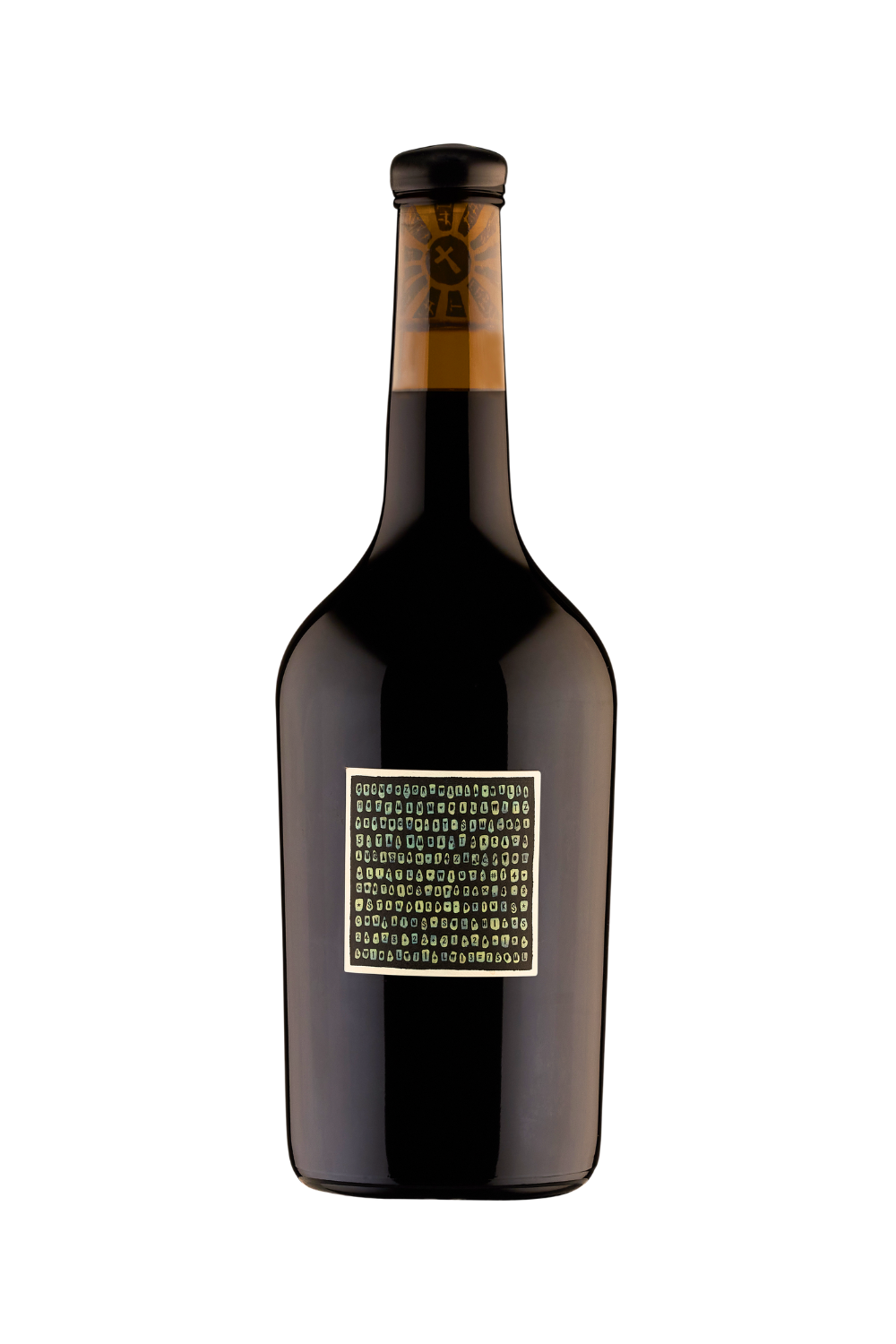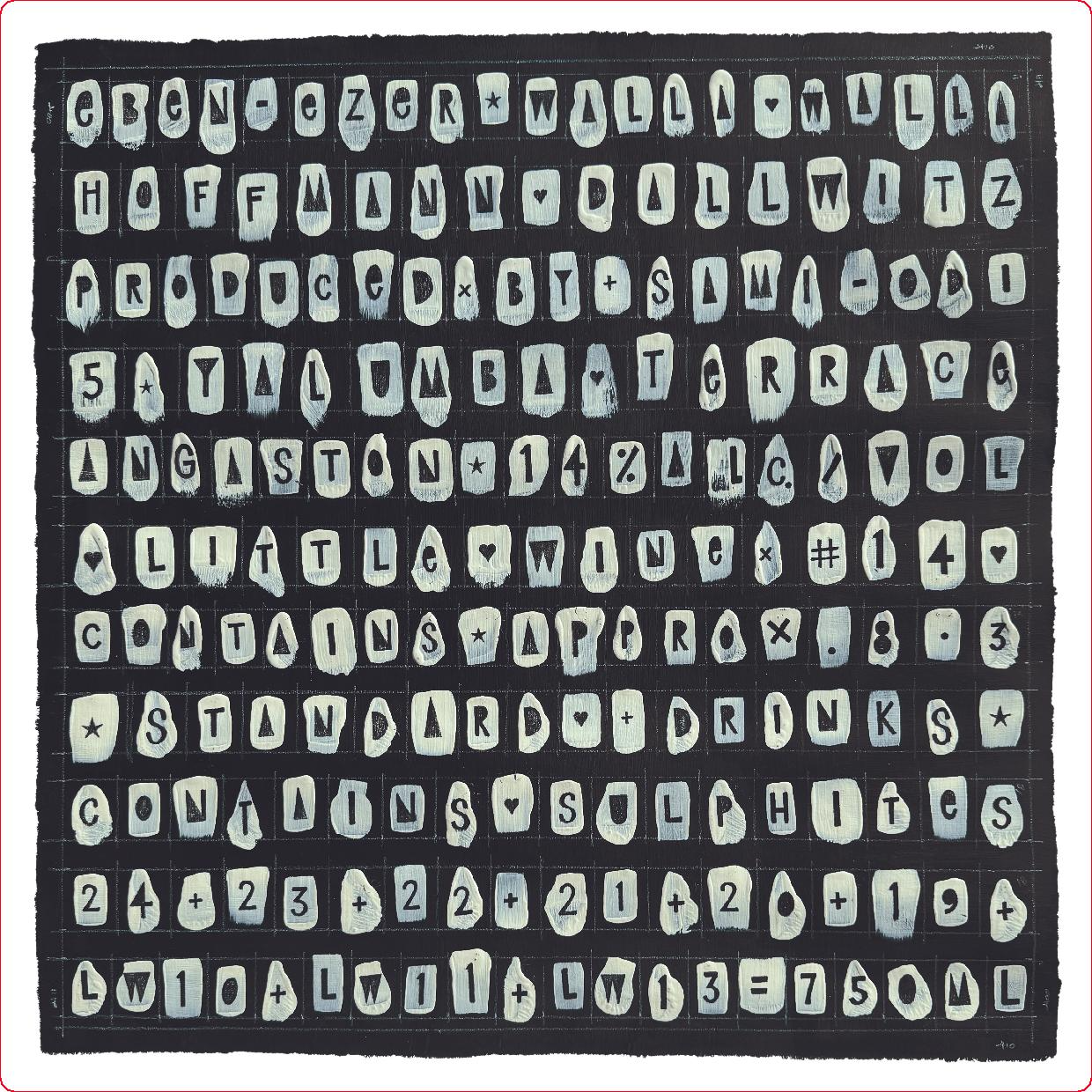
Stats
- Grapes: 100% Syrah
- Vineyard: Hoffman-Dallwitz Vineyard
- Vine Age: 27-135-years-old
- Soil Type: Red & brown soils over deep red clay
- Viticulture: Practicing biodynamic
- Fermentation: Native – stainless-steel (100% whole-cluster - carbonic)
- Skin Contact: 21 days
- Aging: 6-108 months in 228L Burgundy pièces (20% new)
- Alcohol: 14%
- pH: 3.88
- Total Acidity: 4.2 g/L
- Total SO2: 65 ppm
- Total Production: 511 cases

Tasting Note
Deep violet hue. Lush aromas of cherry skin and dark berries meld with whispers of licorice, exotic spice, and worn leather. The rich core of dark fruit liqueur and violet pastille strikes a perfect balance between power and vibrancy, underscored by a subtle mineral edge. As it lingers, the finish deepens with spice, fine-grained tannins, and a hint of sweet tobacco.
Press & Reviews
James Suckling
96
"The nose is fresh and perfumed, with dark fruit aromas of boysenberries, mulberries, blueberry bush, roasted coffee beans, graphite and dried herbs. The palate is medium- to full-bodied with firmly integrated tannins and acidity, giving notes of blackcurrants, mocha, tobacco leaves, spices and iodine. A truly unique wine of multiple vintages that shows freshness and structure. Made half from the newest vintage, 2024, and a mix of back vintages kept in barrel and bottled for release. Very good. Drink or hold."
- James Suckling
- James Suckling
Wine Advocate
97
"The NV Little Wine # 14 is a 24-barrel blend of the following vintages: 2024 is 37% of the blend; 2023 is 32%; 2022 is 12%; 2021 is 8%; 2020 is 4%; 2019 is 3%; 2018 is 1%; 2017 is 2%; and 2016 and 2015 together equate to 1%. The wine, as ever, is elegant and tightly coiled. It has an inherent softness to it, partly from the process of aging and combining the component parts and partly from the older vintages just being softer and more weathered from time. It coalesces with great harmony and restraint, and I find it completely pleasurable. The wine is both floral and mineral, as all of the Sami-Odi wines have the propensity to be, and this sits so well within the confines of the wine. It's a lovely thing. There are notes of graphite, licorice, cracked fennel seed, dark chocolate, blackberry and mulberry, too. 14.1% alcohol, sealed under natural cork."
- Erin Larkin
- Erin Larkin
Select a wine
- 'Little Wine #13' NV - Barossa Valley | Spec Sheet
- 'Little Wine #13' NV - Barossa Valley | Shelf Talker
- 'Little Wine #12' NV - Barossa Valley | Spec Sheet
- 'Little Wine #12' NV - Barossa Valley | Shelf Talker
- 'Little Wine #11' NV - Barossa Valley | Spec Sheet
- 'Little Wine #10' NV - Barossa Valley | Spec Sheet
- 'Little Wine #7' NV - Barossa Valley | Spec Sheet
- 'Little Wine #6' NV - Barossa Valley | Spec Sheet
- 'Little Wine #5' NV - Barossa Valley | Spec Sheet
- 'Little Wine #4' NV - Barossa Valley | Spec Sheet

